The nature writer Jim Crumley ‘relives memorable encounters with some of our best-loved native species’ in his series of small books, Encounters in the Wild. I have very much enjoyed these books, all gifts. I’d like to relive my weeks’ garden encounter with a fieldfare here. A rather indulgent series of images perhaps (photos, a photo slideshow and three videos) but being in the company of this special winter visitor is something I want to look back on. We have spent many, many hours together. I hope blog visitors enjoy seeing it too, that would be a bonus.
Jim talks about sitting in a space and letting the nature come to you, honestly this is not a review, but I have resonated with this in the garden many times. Standing with a camera beside flowers for pollinators is one such place. It’s brilliant. Sitting by our wildlife pond in the summer, another. As I look out my window now the fieldfare is looking back at me, it almost feels like it’s the opposite. I know its not though. It’s being alert. I also think its got good hearing as it does respond to the noise of my camera shutter when I’ve used the continuous setting. It doesn’t leave though.
An estimate of three and a half metres from my window is the distance of the berry tree, cotoneaster hybridus pendulus. I am sitting on the other side of the window at my desk with camera on tripod to hand. I’ve stopped taking photos and am just enjoying the fieldfare being there now. I’ve got enough images for this memory. I planted the cotoneaster especially for feeding birds its berries and pollinators its blossom, many years ago. However, often the berries get left too long and cold temperatures get them. It has been brilliant to see it fully used for the purpose I intended. I never expected a visitor like this though.
Last night’s low temperature has wasted more berries but as I look out my window, the fieldfare is jumping around the branches and finding the good ones left on the under branches. It has stopped feeding again and is just sitting looking around. It has spent hours at a time on this tree and on more than a few occasions I have just sat watching it, for hours, too. Fieldfares are supposed to be social birds but this one scared off a couple of other fieldfares that tried to feast on these berries. I know it has been the same fieldfare I’ve been watching by its particular behaviour. Photos show a particular identifiable pattern in it’s feathers too.
Selecting the video captures and photos shown below has taken some considerable time given the time spells I sat with my camera. However, throughout this time I have continued to enjoy the company of a fieldfare. How lucky I have been. This has truly been a wonderful garden encounter.
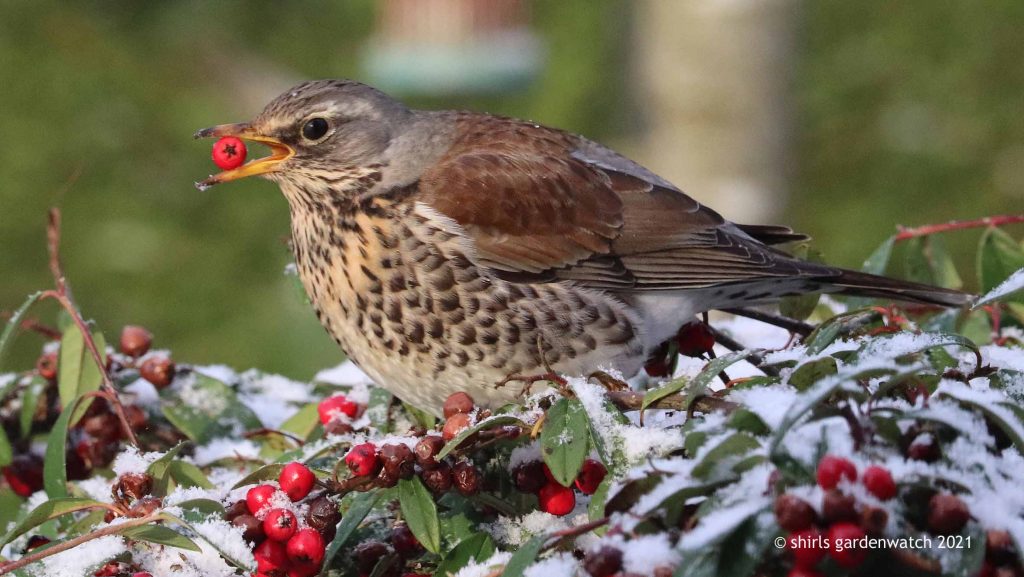
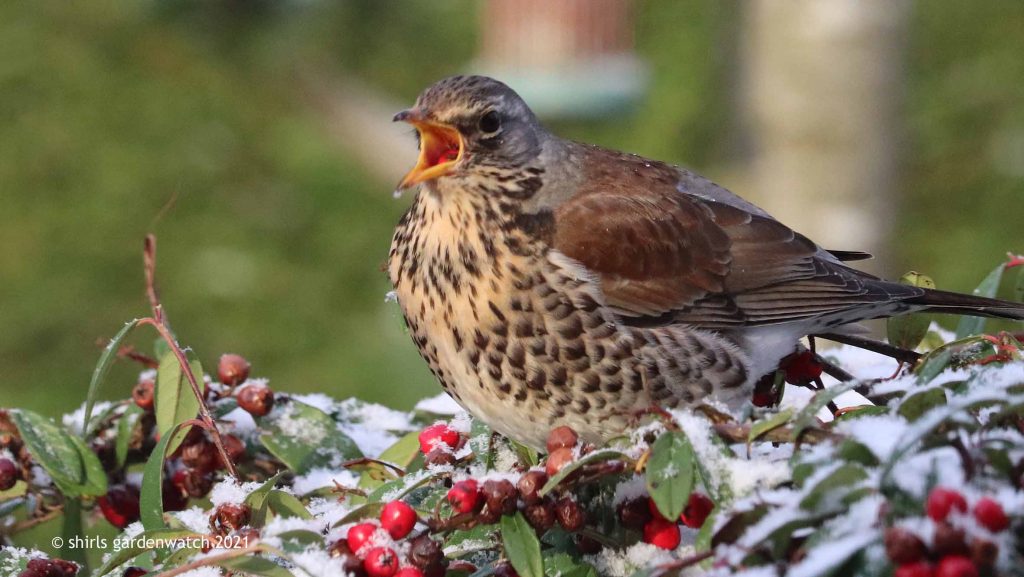
The slideshow below is all of berries picked up by the fieldfare, part and whole swallowed. It should play automatically but if it stops you can cycle through it manually. I wonder just how many berries it has consumed since I spotted it on Sunday morning. It has been leaving the tree only as light goes and it is back again not long after daylight again. It’s still on the tree as I’m about to publish this post.





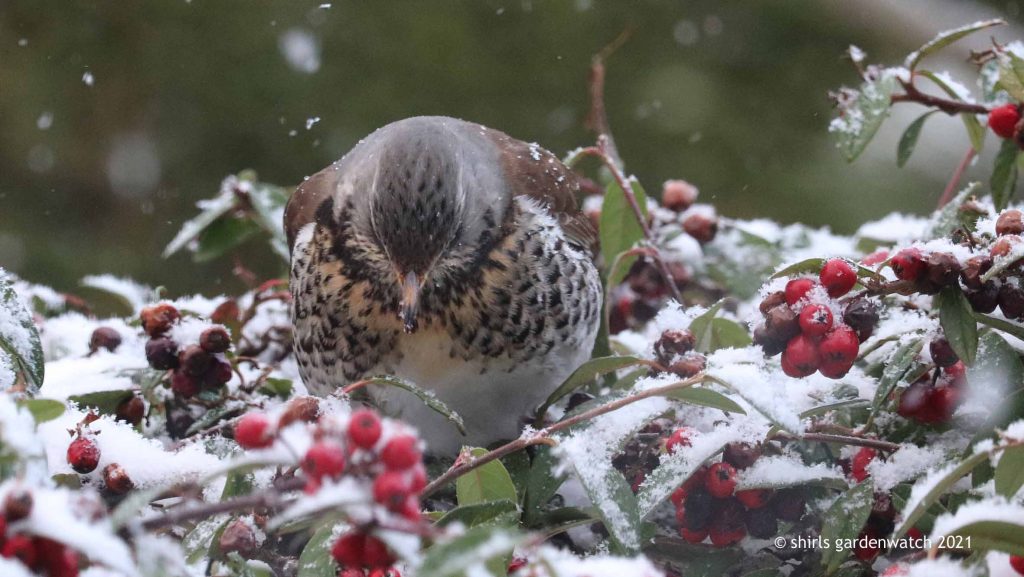

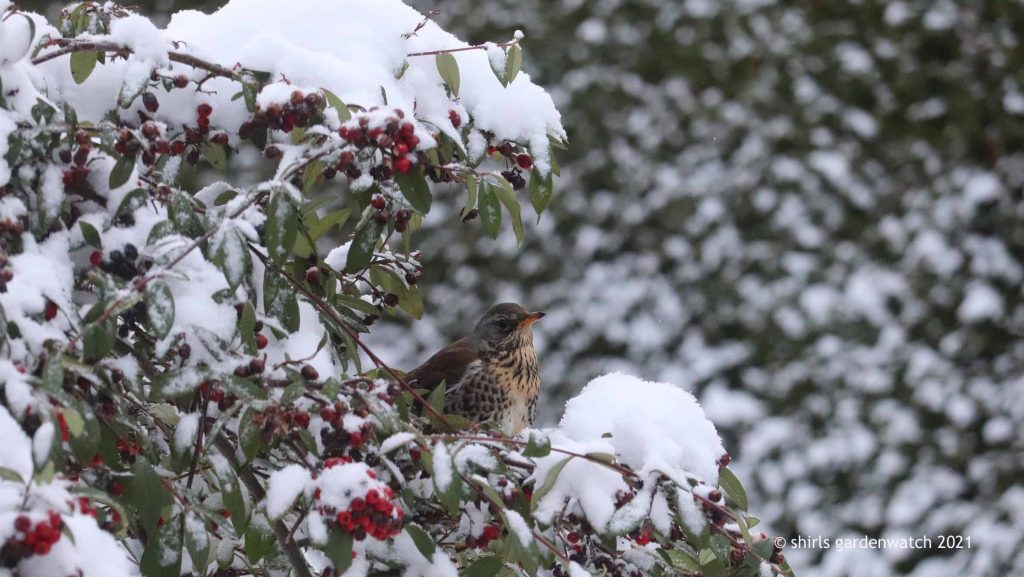


This post was published by Shirley for shirls gardenwatch on February 12th 2021 with this fieldfare overseeing its completion from the berry tree it has become guardian of.



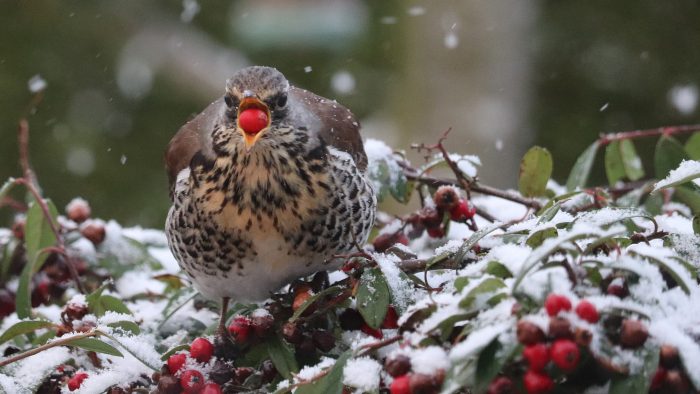


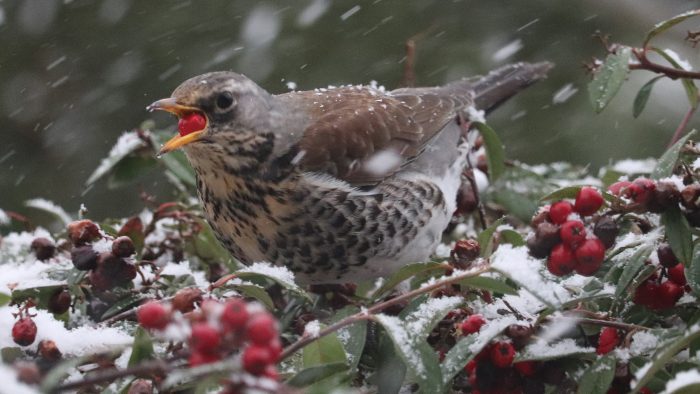

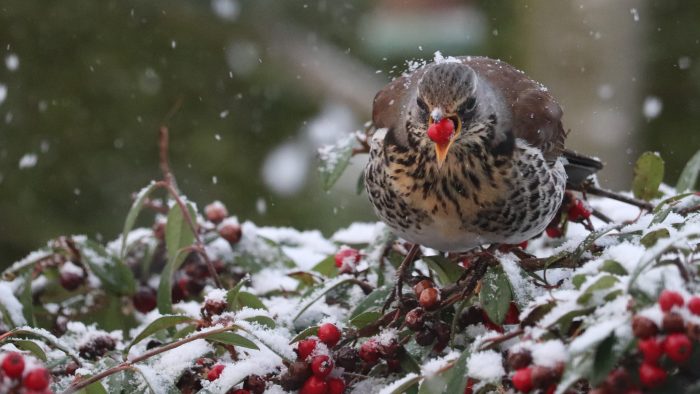

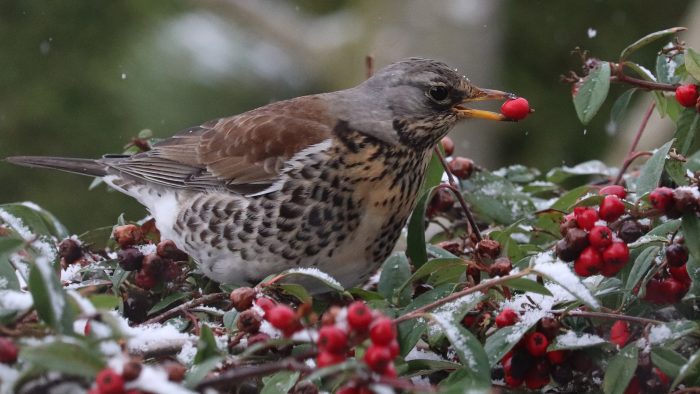

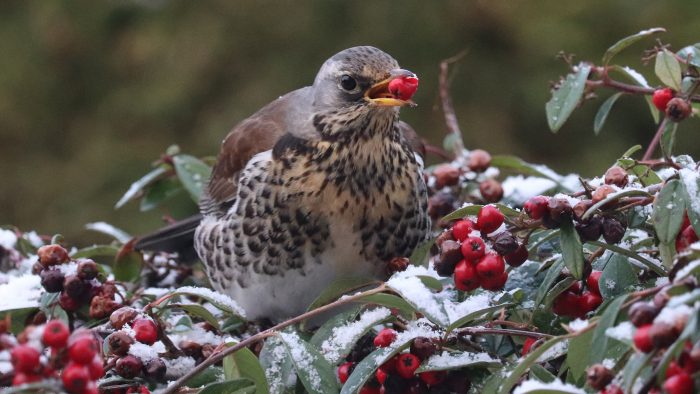


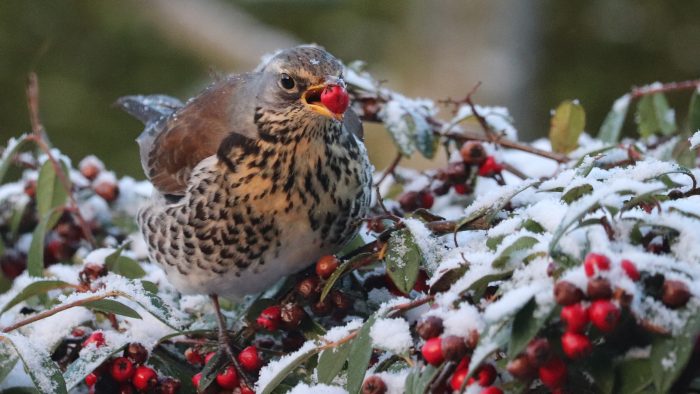
The photos and videos are beautiful. We’ve only ever has a field fare in the garden once when everywhere was frozen and there was a patch of water in the pond. We had our only redwing visitor at the same time.
Thank-you, Sue. I was lucky to get so many in reasonable focus with the fieldfare moving with the berries. The still ones often had snowflakes over them too. It was quite a treat to see for so long. There has never been a bird in the last 15 years that has sat for such long spells, it regularly sat for 2 hours + at a time. I hope you get this experience in the future. Our visits have few over the years too. I’ve yet to spot a redwing in the garden, it has been seen in my neighbours tree over the hedge though, so getting closer 😉
I’m still waiting for them to arrive in the garden here. You have captured some wonderful images, it must have been wonderful watching it from your window.
Hi Pauline, I wish you this experience too. Perhaps this will be the year they will visit you too. It felt quite special, really like I had a companion outside my window. Thank-you! My gardenwatch window has seen many highlights over the years but this has gone straight into the top 5. This morning I opened my kitchen blind to see it once again sitting on my cotoneaster tree. I wished it good morning 😉 I took my breakfast through to my gardenwatch window, as I do at the weekends, it wasn’t visible. It can sit on the other side of the tree, mostly out of my sight, but I can’t see it anymore The cotoneaster berries have been hit hard with our cold temps, I knew this fieldfare’s visits were going to stop soon. I wish it another berry tree to be guardian of 😊
Hello Shirley…… what wonderful photographs. I have just shared on Twitter so I hope that is ok. We saw a fieldfare yesterday …. the first one this year although this week we have also seen a redwing and a song thrush. I have my camera at the ready but am very much a novice camera person. I usually photograph bumblebees and flowers and frogs….. but this winter have tried more birds and getting better at it but when I see your photos I think ….wow. I have just followed you on Twitter too….. We live in Broughty Ferry. I taught at Newtyle School for many years and created a wonderful wild life garden there with the children, but have been retired for a while…. Thank you
Hello and welcome to you both 😊Thank-you! Thanks for leaving a comment too 😊 That was nice of you to share this on twitter also, I was hoping the images and videos (in different light levels) would help others with ID.15 years ago when I started this blog, my dull distant images and my inexperience hampered ID’s. When I would do online searches the really good ones didn’t help me at all, made it worse actually and I began looking at duller images and silhouettes to help. I have captured dull fieldfare images too with it being further away. This cotoneaster tree only gets full light at certain times of the day, short slots too, so I just had to bide my time. I was luckiest with the evening light, it was so much warmer. I took quite a few videos and hundreds of photos this past week. Although I am thrilled with the bright ones I hope the longer snowy video in particular helps others with ID and shares the character of this stunning bird 😊
I’m delighted to hear you’ve seen fieldfare, redwing and song thrush in Broughty Ferry. I do suspect, although you’ve seen solos, there will be larger groups in your area (based on other tweets I’ve seen) so you might get a big surprise one day! Although I love taking photos and will stand in front of flowers photographing bees and butterflies plus sit for hours by my pond waiting for damselflies, I am not much more than a novice too. I use auto settings in my camera and find the continuous shot feature brilliant and used that when trying to capture the fieldfare with berries in its mouth. I was fun, I enjoyed the challenge.
I wish you as much fun photographing birds as you do bees and flowers. My biggest tip would be, just as you know where to expect to photograph bees, focus your eyes on a particular area the birds come to. Getting non blurry images is hard when they move about so fast. Pick a place that you know they will stop longer and wait it out, perhaps a birdbath or a hanging half coconut with fat. Peanut feeders might keep them longer too. Enjoy this new focus on wildlife. You’ve already got the passion and experience having built a wildlife garden with children which must have been very rewarding. Enjoy taking photographs of birds, winter really is the most fun and opportunistic time to be doing this with so many surprises arriving in the garden! I love it. Enjoy 😊
Wonderful photos as always Shirley. What a special visitor to your garden and the ones with snow are a particular delight x
Thank-you, MIchelle 😊 this was a special visitor, not here now with the snow away but wonderful to have seen with the snow and berries close enough to take photos and video too. This had been a delightful week.